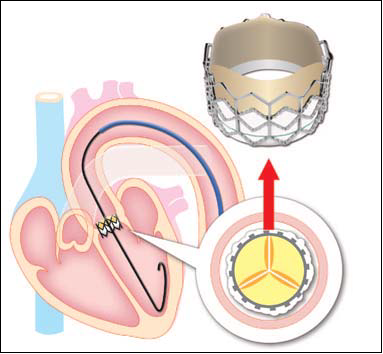What is it
This is a minimally invasive procedure performed in patients with aortic stenosis (narrowing) by a team of cardiologist and cardiac surgeons. It involves wedging a new valve over the old one without having the need to open the anterior chest (sternotomy). A flexible tube (catheter) is threaded up to the heart and across the aortic valve. Expanding the new valve, which is mounted on a big wire mesh tube, pushes the old valve leaflets out of the way and the tissue in the replacement valve takes over the job of regulating blood flow (Fig. 10). Two different approaches are possible, allowing the team to select the most safe and efficient for each specific patient. The first and more common is via the femoral artery (large artery in the groin). This is called the “transfemoral approach” and does not require any surgical incision in the chest. For patients with extensive sickness in the big artery, which does not allows placement of big catheters, a minimally invasive surgical approach with a small incision in the chest is an alternative option (“transapical approach). Patients are usually discharged 2-4 days after the operation.



